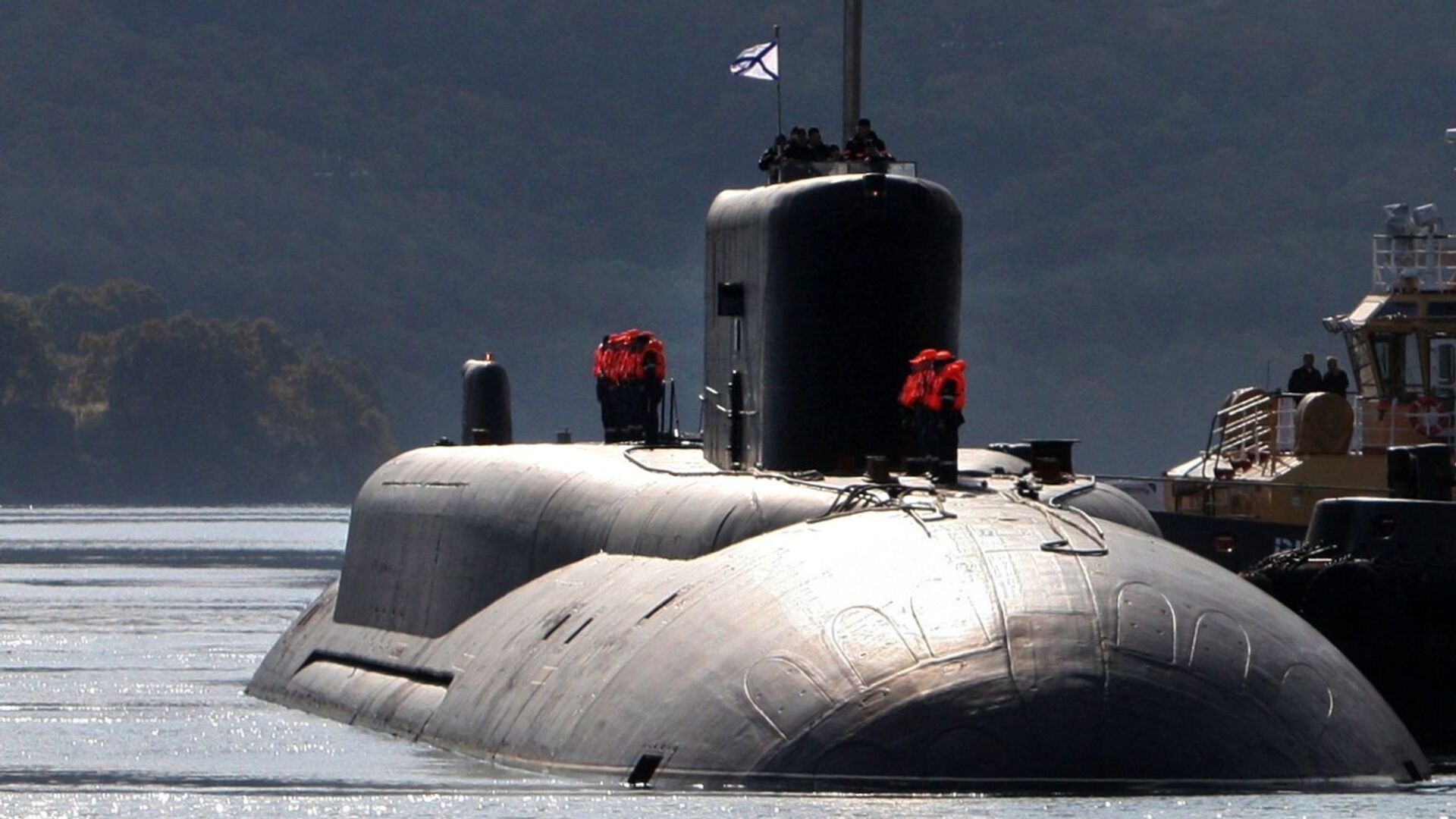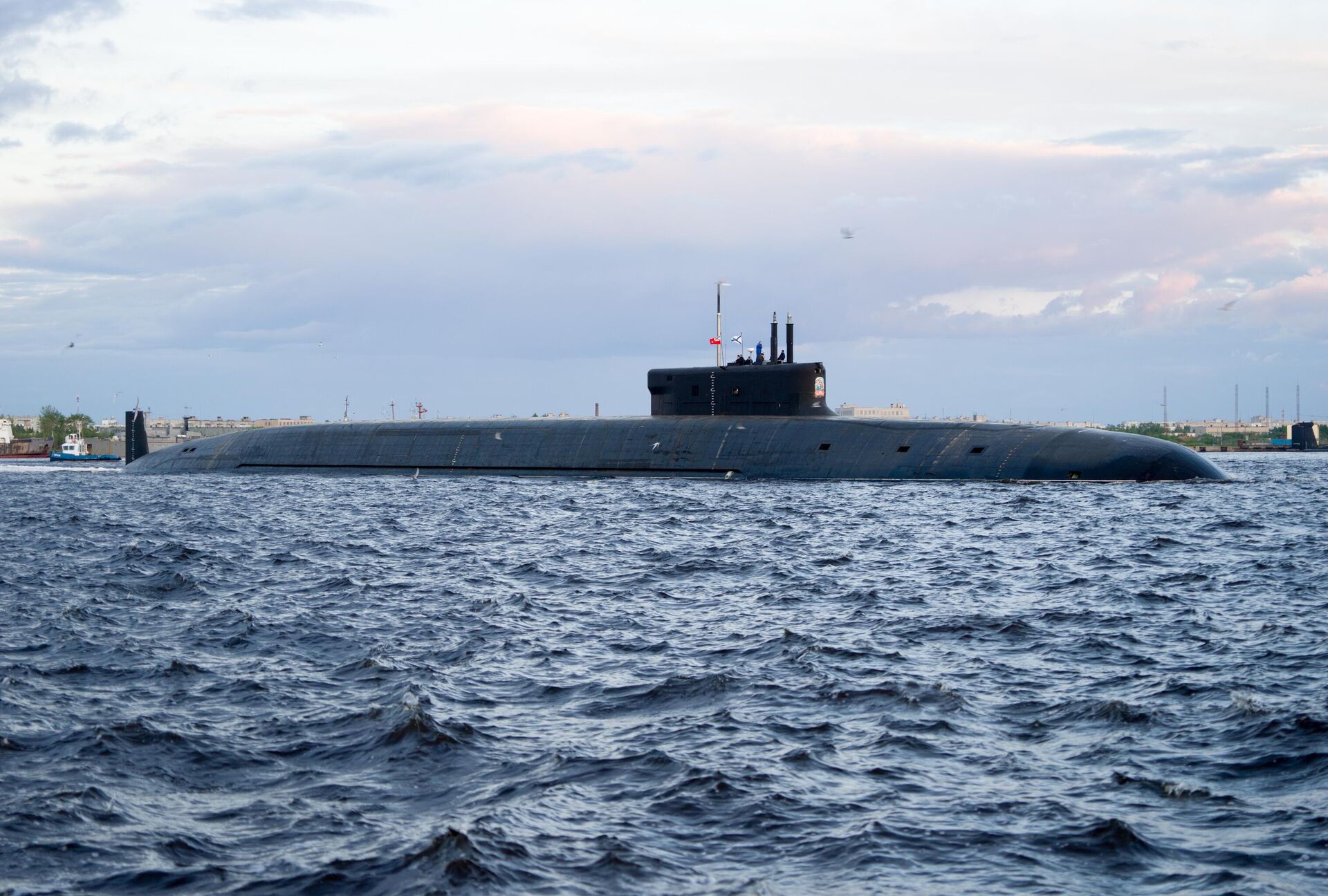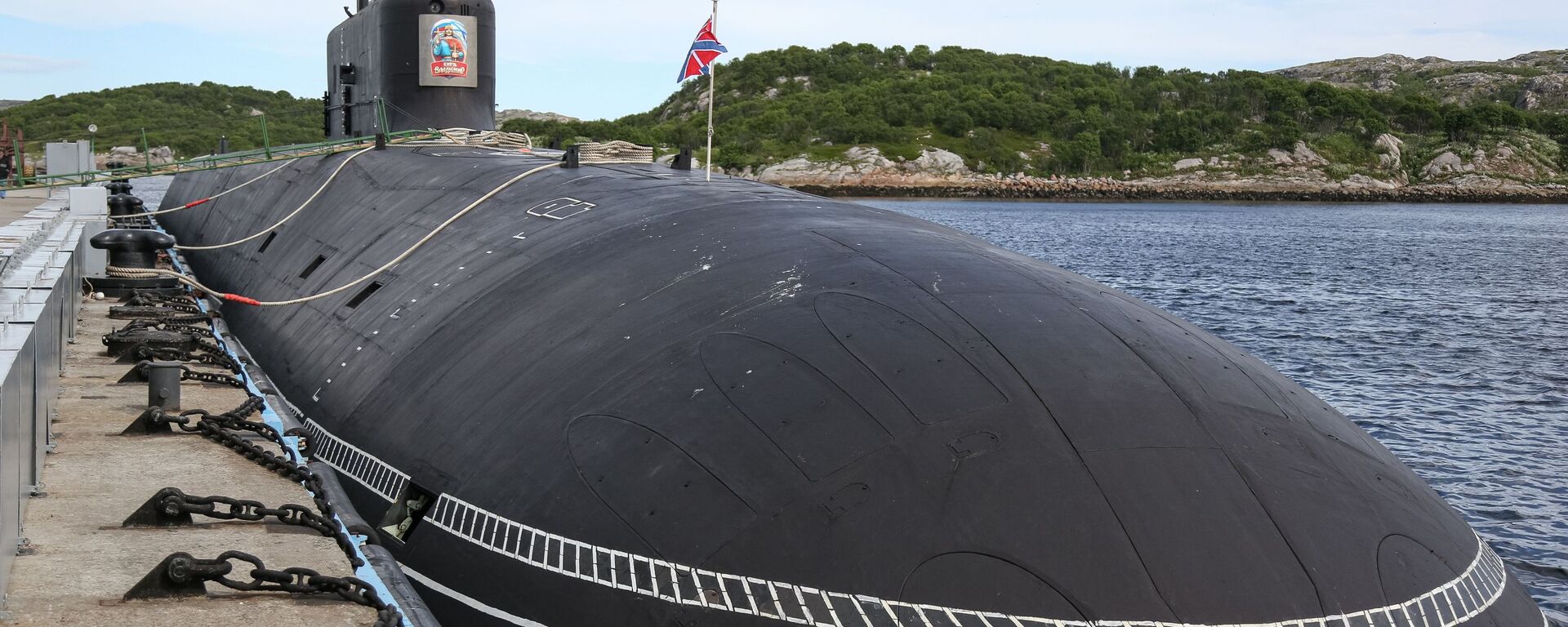https://sputnikglobe.com/20231117/russian-borei-class-subs-sonar-outperforms-us-rivals-by-100-km--experts-1115014955.html
Russian Borei-Class Sub’s Sonar Outperforms US Rivals by 100 km – Experts
Russian Borei-Class Sub’s Sonar Outperforms US Rivals by 100 km – Experts
Sputnik International
In addition to tracking underwater enemy weaponry, a Borei-class submarine’s sophisticated hydroacoustic complex can measure ice thickness and detect open water patches.
2023-11-17T07:39+0000
2023-11-17T07:39+0000
2023-11-17T07:39+0000
military
russia
us
sonar system
borei-class ballistic-missile submarine (type 955)
range
detection
https://cdn1.img.sputnikglobe.com/img/07e4/07/1d/1080008109_0:72:1536:936_1920x0_80_0_0_f27c89d51d48ad0060384413d7b2a87a.jpg
Russia’s Borei-class strategic nuclear-powered submarines are equipped with sonar systems that are much more sensitive than those installed on their US rivals, Russian military experts Vitaly Bychkov and Vladimir Semiletov have pointed out in an article published by the Arsenal Otechestva (lit. Arsenal of the Motherland) magazine.According to them, the subs’ sonar stations allow the crews to detect enemy ships at a distance one and a half times longer than similar systems belonging to the fourth-generation US Virginia-class nuclear-powered submarines and America’s Ohio-class ballistic missile underwater naval vessels, the ones the US Central Command sent to the Middle East in “a message of deterrence” amid the ongoing escalation of the Palestinian-Israeli conflict.He explained that these Russian vessels are equipped with the Irtysh-Amphora-B-055 sonar system, which can simultaneously track at least 30 underwater targets. The complex comprises main hydroacoustic antenna Amphora with digital signal processing, as well as large-area sidelong and towed antennas.Apart from tracking submarines, torpedoes, mines and other underwater enemy weapons, the system is capable of measuring the thickness of ice in the Arctic, as well as pinpointing unfrozen patches of water in the sea, which helps a sub surface or launch ballistic missiles.Currently, the Russian navy has a total of six such submarines, including the Yury Dolgoruky, the Alexander Nevsky, the Vladimir Monomakh, as well as the Prince Vladimir, the Prince Oleg and Generalissimo Suvorov. One more Borei-class sub is due to enter service with the Russian Pacific Fleet before the end of 2024, while another three underwater naval vehicles of this class are now under construction.
https://sputnikglobe.com/20210517/russia-could-go-beyond-planned-series-of-10-borei-class-nuclear-powered-subs-government-says-1082913306.html
russia
Sputnik International
feedback@sputniknews.com
+74956456601
MIA „Rossiya Segodnya“
2023
Oleg Burunov
https://cdn1.img.sputnikglobe.com/img/07e4/09/0b/1080424846_0:0:2048:2048_100x100_80_0_0_3d7b461f8a98586fa3fe739930816aea.jpg
Oleg Burunov
https://cdn1.img.sputnikglobe.com/img/07e4/09/0b/1080424846_0:0:2048:2048_100x100_80_0_0_3d7b461f8a98586fa3fe739930816aea.jpg
News
en_EN
Sputnik International
feedback@sputniknews.com
+74956456601
MIA „Rossiya Segodnya“
Sputnik International
feedback@sputniknews.com
+74956456601
MIA „Rossiya Segodnya“
Oleg Burunov
https://cdn1.img.sputnikglobe.com/img/07e4/09/0b/1080424846_0:0:2048:2048_100x100_80_0_0_3d7b461f8a98586fa3fe739930816aea.jpg
sonar system of russia’s borei-class strategic nuclear-powered submarine, america’s ohio-class ballistic missile submarine, the fourth-generation us virginia-class nuclear-powered submarine, russian navy
sonar system of russia’s borei-class strategic nuclear-powered submarine, america’s ohio-class ballistic missile submarine, the fourth-generation us virginia-class nuclear-powered submarine, russian navy
Russian Borei-Class Sub’s Sonar Outperforms US Rivals by 100 km – Experts
The advanced hydroacoustic complex of a Borei-class submarine enables it to effectively track underwater enemy weaponry, accurately measure ice thickness, and detect open water patches.
Russia’s
Borei-class strategic nuclear-powered submarines are equipped with sonar systems that are much more sensitive than those installed on their US rivals, Russian military experts
Vitaly Bychkov and
Vladimir Semiletov have pointed out in an article published by the
Arsenal Otechestva (lit. Arsenal of the Motherland) magazine.
They praised the hydroacoustic complex as “one of the innovative means of superiority” of the Borei-class submarines.
According to them, the subs’ sonar stations allow the crews to detect enemy ships
at a distance one and a half times longer than similar systems belonging to the fourth-generation US Virginia-class nuclear-powered submarines and America’s Ohio-class ballistic missile underwater naval vessels, the ones the US Central Command sent to the Middle East in
“a message of deterrence” amid the ongoing escalation of
the Palestinian-Israeli conflict.
Arsenal Otechestva editor-in-chief of Viktor Murakhovsky, for his part, earlier told Sputnik that the Borei-class subs’ sonar systems exceed those of the US nuclear-powered submarines by about 100 kilometers (about 62 miles) in terms of detection range.
He explained that these Russian vessels are equipped with the Irtysh-Amphora-B-055 sonar system, which can simultaneously track at least 30 underwater targets. The complex comprises main hydroacoustic antenna Amphora with digital signal processing, as well as large-area sidelong and towed antennas.
Apart from tracking submarines, torpedoes, mines and other underwater enemy weapons, the system is capable of measuring the thickness of ice in the Arctic, as well as pinpointing unfrozen patches of water in the sea, which helps a sub surface or launch ballistic missiles.
The Borei-class submarine is a fourth-generation Russian underwater naval vessel, which carries up to 16 intercontinental ballistic missiles RSM-56 Bulava (NATO reporting name SS-NX-30) with a flight range of up to 9,000 km (around 5,600 miles).
Currently, the Russian navy has a total of six such submarines, including the Yury Dolgoruky, the Alexander Nevsky, the Vladimir Monomakh, as well as the Prince Vladimir, the Prince Oleg and Generalissimo Suvorov. One more Borei-class sub is due to enter service with the Russian Pacific Fleet before the end of 2024, while another three underwater naval vehicles of this class are now under construction.





